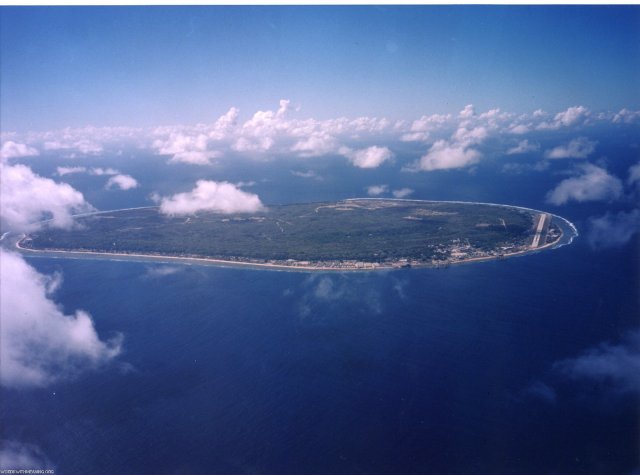
More than 3300 asylum seekers have arrived in Australia by boat since the August 13 “expert panel report” on refugees. The Australian government has made no moves to hear the asylum claims of those sent to Nauru or held in mainland detention.
The decision to stop processing refugee claims from people arriving by boat was part of Labor’s government return to the “Pacific solution” under a so-called “no advantage” system. It has already created an alarming backlog and distress for many.
Conditions on Nauru — where about 200 asylum seekers transferred over the past month now live in tents — have led to protests, several voluntary returns and at least one suicide attempt.
Three refugees were taken to a local police station and held overnight after Iranian and Iraqi men caused a “bit of damage” in the camp’s TV room, a police spokesperson said on October 2. Immigration minister Chris Bowen said he would “expect some disturbances”.
The Refugee Action Coalition Sydney (RAC) said an Iranian asylum seeker tried to commit suicide and was “turning blue” when others found him on October 11.
Refugees held on Nauru have been denied the right to apply for refugee status and access to legal help. They were told by Bowen on his recent visit that it would be “between eight months and a year before refugee processing would begin on Nauru,” RAC said. During this time, the government plans to force up to 1500 people to the Nauru detention camp.
A September report by Curtin University professor Caroline Fleay outlined the severe and traumatising consequences of detaining refugees on Nauru under the former John Howard government. She said the head psychiatrist on the island reported that after only the first three months in detention,“many asylum seekers were showing ‘clear symptoms of suffering or distress’”.
The report said “indications from the Australian government” show that the human costs of offshore processing are likely to be repeated. It “suggests living conditions for the first asylum seekers will be once again grossly inadequate”.
So far, only single men are housed in Nauru’s army-built “Topside” camp. But families, pregnant women and children have been offered no exemptions. These refugees, now held in various detention centres around Australia, have also been unable to claim refugee status.
Reports from detention centres in Perth, Curtin, Darwin, Melbourne and Christmas Island say that none of those who arrived by boat after August 13 have been able to apply or have their respective situations heard by immigration. They include children with disabilities, heavily pregnant women and torture survivors.
Given the fact that there is more than double the number of refugees already in Australian detention than will be sent to Nauru and Manus Island, their future is precarious and unclear.
The government's “no-advantage” policy means refugees sent to Nauru will have to stay there indefinitely. Nauru is completely unequipped to deal with processing or resettling them.
The government has now officially assigned Papua New Guinea's Manus Island as an “offshore processing place” for up to 600 asylum seekers. Despite serious warnings from the United Nations High Commissioner for Refugees that Manus Island does not have the legal framework to handle refugees and asylum seekers, Bowen said the plan was in Australia's “national interest”.
The immigration minister has unilateral power to choose an “offshore processing place”. In his statement on Manus Island, he said a refugee detention centre in PNG was “not inconsistent with Australia's international obligations”. But Bowen also said he “had chosen not to have regard to the international obligations or domestic law of PNG” in making the decision.